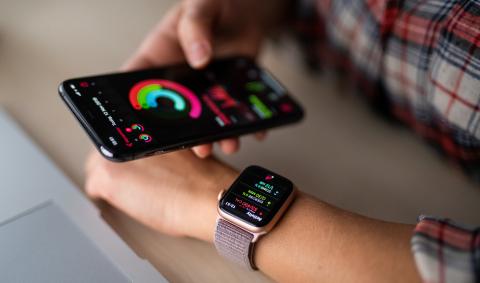
In the fall of 2019, HIRC took a deep dive into population health with its panel of Accountable Care Organizations, those at the forefront of delivering value-based care, to learn about their capabilities and continued challenges in driving health among their populations. To our surprise, one of the biggest gaps among our panel was in patient education, something from our experience is typically well-resourced by pharmaceutical manufacturers and other vendors.
In analyzing this further, HIRC found that there wasn’t a lack of volume of resources, but rather ACOs want resources to move away from paper-based materials towards technology-enabled solutions. Rather than handing a patient a pamphlet when they are ill, health care providers desire resources that are at the fingertips of patients at all times, delivering more interactive and customized learning experiences at any stage of a patient’s health care whether they be managing an illness, preventing one, or focused on wellness.
Patient engagement technology is among the critical factors succeeding in value-based reimbursement models as it can have a tremendous impact on quality performance objectives. Patient portals alone can make a big difference - a Penn Medicine study recently found that those that use an online portal were 50% more likely to get a flu shot, 50% more likely to have their cholesterol checked, and twice as likely to have their blood pressure checked compared to patients not utilizing these tools. Let’s take a look at some examples of digital patient engagement solutions being implemented by health plans and providers as we speak:
UnitedHealthcare’s App Enhances Access to Care
In October of 2019, United announced the launch of its new UnitedHealthcare mobile application for members, offering its 27 million plan participants “a single source to help maintain and improve their wellbeing.” The UnitedHealthcare app offers a number of capabilities to improve members’ access to care and benefits information, including:
- Virtual visits - Members can use the app directly to schedule and conduct a virtual telehealth visit
- Locate nearby physicians, hospitals and urgent care locations via the phone’s GPS functionality, handy when traveling
- Access health insurance cards, view information about deductibles and out-of-pocket limits, and check balances and reimbursements related to health savings accounts
- Comparison shop for care based on quality and cost
United cited a number of reasons for investing in this digital technology, among them being to offer alternatives to using the emergency room, stating that 25% of ER visits could be addressed appropriately via telehealth. The investment is also intended to help members located in rural areas where access to care is a challenge.
This new app is part of United’s more than $3B annual investment into data, technology, and innovation, so we can expect to see more digital solutions for patients from the insurer in the near future.
Humana and Blue Shield Add Digital Solutions to Wellness Programs
Humana’s Go365 and Blue Shield of California’s Wellvolution wellness programs are not new, but both companies announced in 2019 adding digital features that they believe will enhance these programs’ effectiveness.
Humana’s Go365 gives members rewards for achieving wellness goals. While workplace wellness programs have not always demonstrated desired results, Humana reports that Go365 users showed a lower risk of heart disease, diabetes, and kidney disease and are eating healthier food and exercising more. To continue this momentum, Humana has partnered with a number of digital health companies, giving Go365 members new access to Fitbit Coach, DailyBurn, MindSciences, and Noom - combined, these apps assist members with fitness, mental health, and nutritional goals.
While Humana connects users to specific mobile app partners, Blue Shield of California has designed a new personalized health and lifestyle platform for its Wellvolution program that matches users to recommended digital therapeutic providers and mobile health apps based on their interests - aimed at “cutting through the clutter” of the numerous wellness apps available. This personalized approach appears to be working – early data from the programs showed that roughly “90% of participants are finishing the programs they select and that 80% are choosing digital options over community-based programs.”
CVS Getting Digital to Address Social Determinants of Health
Notably, digital healthcare apps are going beyond care access and wellness and beginning to address social needs as well. CVS’ Destination: Health app, launched in 2019 for Aetna plan members, connects users to social services in their community. This effort is part of CVS and other large healthcare organizations’ (Kaiser and Blue Cross Blue Shield to name a few) investment into addressing social determinants of health. We have an upcoming blog in the works that digs deep into that topic, so stay tuned!
For better or worse, we are as connected as ever to our electronic devices, making digital solutions a powerful tool in enhancing patient engagement in their health care and wellness. Manufacturers are uniquely positioned with resources and knowledge to partner with payers and providers alike to expand these concepts to education - moving away from the paper pamphlet and towards more engaging and personalized educational initiatives. HIRC will continue to monitor new innovations in its research with payers, PBMs, and providers and bring insights into how pharmaceutical companies can partner in the growing need for digital patient engagement.

